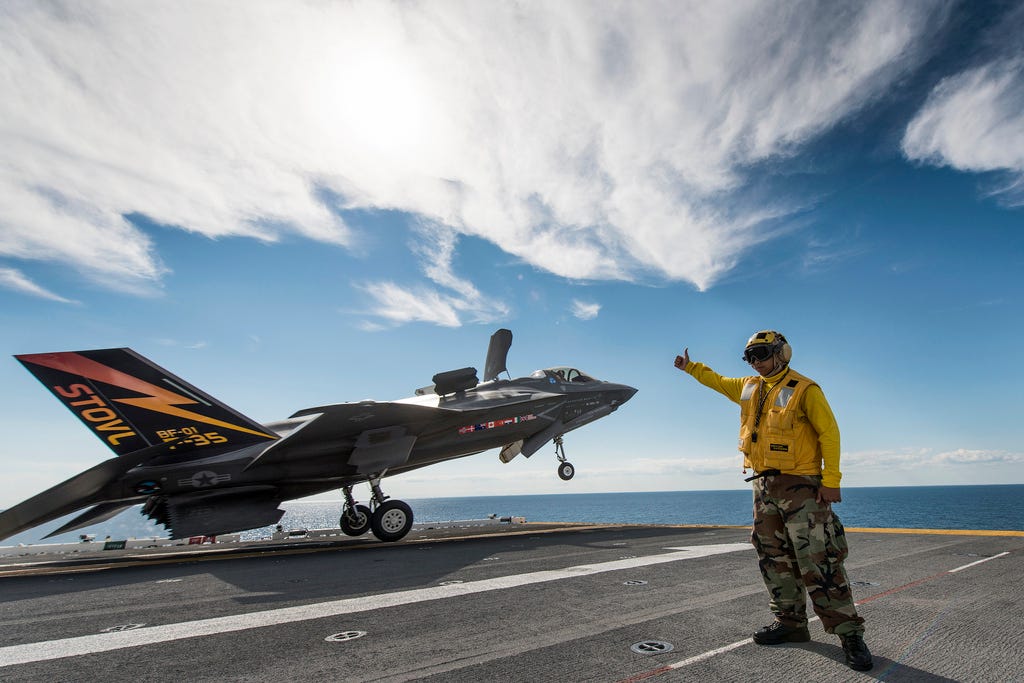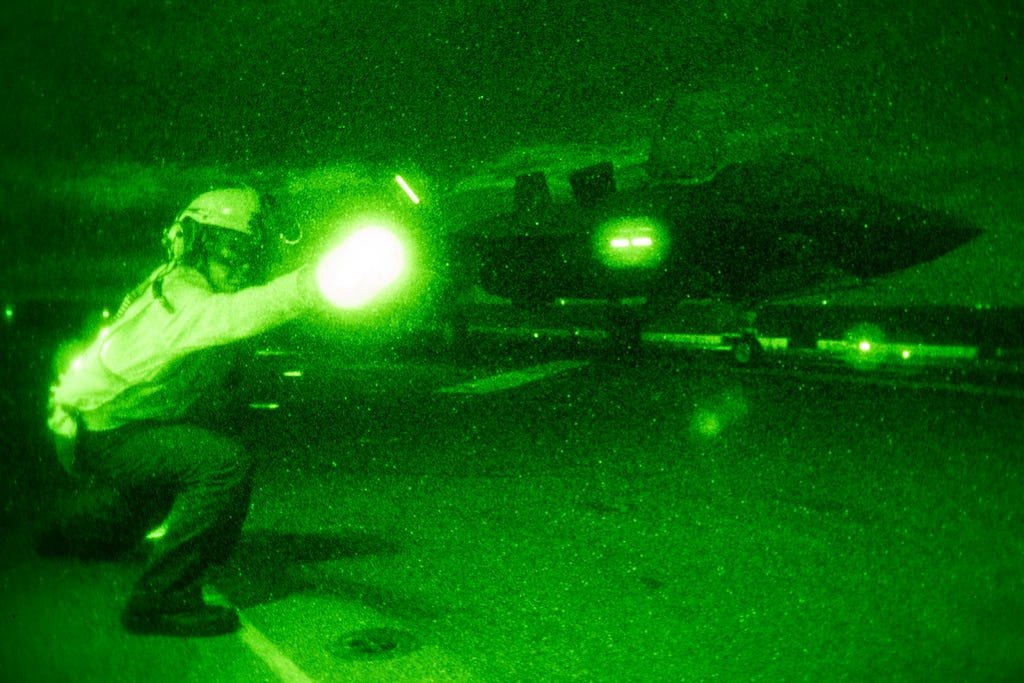The Pentagon’s latest weapons testing report is not kind to the $400-billion F-35 Joint Strike Fighter, the military’s biggest and arguably most troubled program. The annual report by the Office of the Director of Operational Test and Evaluation includes 20 pages listing the Lockheed Martin-built JSF’s ongoing problems.
A jack-of-all-trades radar-evading jet meant to replace no fewer than 2,400 existing fighters in the U.S. Air Force, Navy and Marine Corps, the F-35 has been dogged by budget overruns, schedule delays and redesigns. Overly complex in order to satisfy the diverse needs of three military branches, the F-35 is slower, less durable and less reliable than many of the planes it’s slated to replace.
Most damningly, the 2013 test report predicts months of delays in the development of the F-35’s millions of lines of software, which could cause the Marine Corps and Air Force to miss their planned first deployments of combat-ready JSFs in 2015 and 2016, respectively.
But the DOT&E report also includes lots of other embarrassing details.

Only one third of F-35s are flight-ready
The military manages to keep around three quarters of its warplanes ready for flight at any given time. Even the Air Force’s devilishly complex F-22 stealth fighter—another Lockheed product—is ready 69 percent of the time.
But the roughly 50 F-35s in test or training squadrons in Florida, California, Nevada and Arizona are ready just a third of the time, on average. That’s because the jets need frequent design fixes and because Lockheed’s automated supply system isn’t working.
Now, it’s not uncommon for a new warplane to start out a tad unreliable and get more ready over time. But the F-35 has been flying in one form or another off and on for 14 years. “The design is becoming more stable and opportunities for reliability growth are decreasing,” the report notes.
“While the relatively low number of flight hours shows there is still time for program reliability to improve,” the report continues, “this is not likely to occur without a focused, aggressive and well-resourced effort.”
Which is to say, making the JSF more flight-ready is going to also make its development more expensive.

The F-35 will get you lost
The JSF is designed to fly and fight against the most determined foe—even a foe capable of jamming or destroying America’s Global Positioning System satellites, depriving U.S. forces of their preferred way of knowing exactly where they are in the world.
But the F-35’s independent “inertial” navigation gear—which determines the plane’s position by constantly computing starting point, direction, speed and time—is off by a few degrees. That’s just enough to make it useless in combat. “These errors prevent accurate targeting solutions for weapons employment in a GPS-denied environment,” the Pentagon warns.
A software fix is in the works, but “further flight testing will be required.” Again, that takes time and money.

The JSF’s main air-to-air missile doesn’t fully work—and it’s not clear why
The F-35 needs three basic weapons in order to be cleared for combat in 2015: a laser-guided bomb, a satellite-guided bomb and the AIM-120 air-to-air missile.
The nav system problems slowed the addition of the satellite bomb—basically, the munition didn’t know where to land. That, at least, was a known unknown—and engineers were able to solve it with a “fix in the mission systems software,” according to the report.
But the AIM-120 isn’t working on the F-35, either. And in contrast to the bomb problem, testers have not been able to resolve the missile issue because they can’t quite duplicate it. “Problems involving integration of the AIM-120 medium-range missile have been difficult to replicate in lab and ground testing,” the report notes.
It is, in other words, an unknown unknown. And who can say what the solution is.

The F-35 confuses itself
To defend against increasingly sophisticated Russian- and Chinese-made air defenses, the JSF includes a cluster of high-tech cameras and sensors able to detect incoming missiles—and automatically deploy heat-generating flares or radar-foiling chaff to spoof the enemy guidance.
But the so-called “Distributed Aperture System” doesn’t work. “The DAS has displayed a high false alarm rate for missile detections during ownship and formation flare testing,” the testing report reveals. Basically, the system cannot tell the difference between an enemy missile and one of the F-35’s own hot flares.
Imagine the feedback loop that could result. An F-35’s DAS detects an incoming missile and pops flares. DAS then mistakes those flares for another missile and pops more flares, then still more flares to spoof them. So on and so on until the F-35 runs out of countermeasures … and is defenseless.

It takes just one bullet fragment to shoot down an F-35B
The Marines’ F-35B variant includes a built-in vertical lift fan—basically, a downward-blasting engine—to allow the plane to take off of and land on the Navy’s small amphibious assault ships. But adding a bulky lift fan made the JSF heavier, more complex and easier to shoot down.
That’s especially true for F-35Bs flying low to support Marine infantry on the ground. A lone enemy soldier firing a single bullet could seriously damage an F-35B. “Analysis showed that fragment-induced damage could result in the release of more than 25 percent of a single lift fan blade, resulting in a catastrophic … system failure,” the DOT&E report warns.
And if the F-35B has to fly through high-tech air defenses in order to reach the beachhead, it’s even more likely to get shot down. “More severe threats, encountered at low altitude or in air-to-air gun engagements, will likely cause catastrophic damage.”
All this means that even if the JSF manages to meet its 2015 deployment deadline, it could fly into combat unreliable, confused, defenseless, toothless and vulnerable.https://medium.com
No comments:
Post a Comment